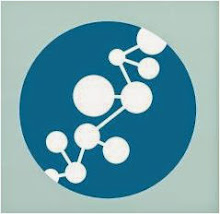
BIOLOGICAL ACTIVITY:
Manganese(II) ions function as cofactors or a number of enzymes in higher organisms, where they are essential in detoxification of superoxide free radicals. It aids in the formation of connective tissue. It enables the body to utilize vitamin C, B1, biotin as well as choline. It is a cofctor in metabolism of fat, sex hormones and breast milk in females.
IN LARGER AMOUNTS: and with greater activity by inhalation, manganese can cause a poisoning syndrome in mammals, with neurological damage which is sometimes irreversible (impaired motor skills and cognitive disorders).
MANGANESE IN FOODS: you can found Manganese almonds, wallnuts, avocados, eggs, brown rice, spices, whole grains, leafy greens, liver, tea and coffee.
NUTRITION TIP: A daily cup of tea proves a good portion of your manganese intake.
DEFICIENCES: Severe deficiencies are rare and can cause growth retardation, changes in circulating HDL cholesterol and glucose levels, reproductive failure. Serious deficiency in children can result in paralysis, deafness and blindness. Sub-clinical deficiencies can be linked to depression, weakness, tremors, irrational behaviour, leg cramps.
RDA (Recommended Daily Allowance) in Italy: is 1-10 mg a day (LARN 1996).
According to the Italian law nutritional supplements can not contain more that 10mg per day per dose for adults. This follow the European Union Population Reference Intake for males aged 18 years and over that indicate "acceptable range of intakes": 1-10 mg.
ABSORPTION: Manganese is not easily absorbed but we need only small amounts that are generally retreived from food in healthy subjects. Leaky gut sindrome, chronic inflammatory diseases and alterations of the intestinal barrier can reduce Mn absorpition. Absorption is also negatively influenced in the presence of calcium, phosphorous, zinc, cobalt and soy proteins. Don’t forget that refined grains contain only 50% of whole grains, so a diet based on refined food can lead to a sub-clinical deficiency.
LAB TESTS: Serum manganese concentrations in combination with lymphocyte manganese-dependent superoxide dismutase (MnSOD) activity and perhaps blood arginase activity, appear to be the best ways to monitor ingestion of insufficient manganese. Serum manganese concentrations in combination with brain MRI (magnetic resonance imaging) scans, and perhaps a battery of neurofunctional tests, appear to be the best ways to monitor excessive exposure to manganese.
ANTIAGING ACTIVITY AND SKIN HEALTH
- structural;
- Needed to build collagen
- It helps to have a high bone density
- Necessary for energy production
- Active in DNA repair
- related to the cofactor activity in the MnSOD.
Antioxidants scavenge damaging particles in the body known as free radicals. These particles occur naturally in the body but can damage cell membranes, interact with genetic material, and possibly contribute to the aging process as well as the development of a number of health conditions. Antioxidants such as MnSOD can neutralize free radicals and may reduce or even help prevent some of the damage they cause.
Recent studies have shown that antioxidant enzyme expression and activity are drastically reduced in most human skin diseases, leading to propagation of oxidative stress and continuous disease progression. Numerous studies have shown that MnSOD can be induced to protect against pro-oxidant insults resulting from cytokine treatment, ultraviolet light, irradiation, certain tumors, amyotrophic lateral sclerosis, and ischemia/reperfusion. In addition, overexpression of MnSOD has been shown to protect against pro-apoptotic stimuli as well as ischemic damage. Regulation of antioxidant activity is a new target for dermatologists.
Probably the role of MnSOD beyond its essential role for survival and suggest a novel strategy for an antioxidant approach to cancer intervention.
SUPPLEMENTS WITH Mn: There are several forms of supplementary manganese including: manganese gluconate, manganese sulfate, manganese ascorbate, and manganese amino acid chelates. Typical supplemental intake of manganese ranges from 2 to 5 milligrams daily. Interactions can occur if taken together with oral contraceptives (not recommended). The regulatory mechanisms of Mn homeostasis are bypassed via the parenteral route so elimination via the hepatobiliary system is impaired, resulting in tissue or brain accumulation. It is unnecessary for Mn to be prescribed routinely for pediatric or long-term PN patients.
MANGANESE AND approved EU health claim for skin health:
EU states that Mn is requested for production of enzimes involved in proteic and lipidic metabolism. Mn contributes to the normalmanifacture of collagen.
Tweet


No comments:
Post a Comment